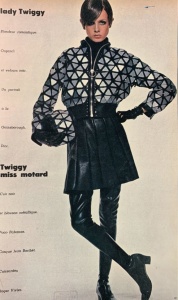Donatello89
Active Member
- Joined
- Jan 15, 2009
- Messages
- 3,010
- Reaction score
- 0
this house died so quickly...
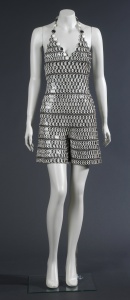
This outfit transcends the materials, pattern-cutting and making-up techniques that had gone before. Alternating black and white plastic discs are arranged in strips or rows. Each disc has five holes, two above and two below, through which four steel rings pass. This construction system determines the form of the outfit. The strips are wider at the centre of the body and narrower at the top and bottom. The breasts are covered by two triangles, which join at the nape of the neck. The outfit flares out slightly below the waist as the construction becomes more complex to create the trousers. While the form may be comfortable thanks to its loose fit, the materials used are far from soft.
This conceptual dress from the first stage of Paco Rabanne's career made metallic chains — evoking the mediaeval knight's armour or chain mail — fashionable. This outfit is an always recognizable icon of fashion history, and has been reinterpreted by its designer on several occasions. Rabanne's motto is 'Don't seduce; surprise'. Along with André Courrèges and Pierre Cardin, he revolutionized the way we think about fashion, creating a futuristic and timeless style that won favour with the most daring actresses and singers.
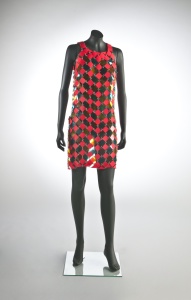
Short dress from Paco Rabanne made with small plates of cellulose acetate, cut into squares, triangles and rectangles in a strawberry pink colour, combined with some transparent ones. All the plates are joined and articulated with silver coloured steel rings, one in each corner and another ring in the centre. Its cut is above the knee and in A-line, with straps, straight neckline and with recessed armholes. It closes in the centre of the neckline , in the back, with a clasp of a silver metallic colour.
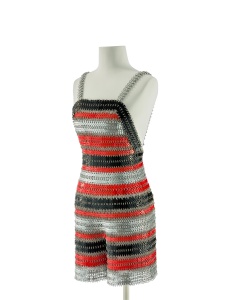
This waisted jumpsuit with cropped legs is another example of Rabanne’s approach, and documents his renunciation from conventional materials. The hot pants are entirely made of equal sized, silver coloured aluminium disks and synthetic red and black disks arranged horizontally. Each eye has five punched holes, four of which are connected to other disks by virtue of ring eyelets. The straps are made of a single row of aluminium disks. The lined trousers have a straight top that runs down with a slight swing to the waist. The back is left free and has a concealed closure with hook and eyes. The so-called hot pants, which became fashionable in 1971/72, were controversial because — like the miniskirts — a flawless figure was the single key to an aesthetic appearance.
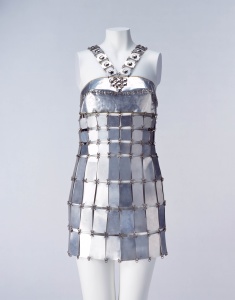
This mini dress made of aluminum plates sums up work of Paco Rabanne, known as the "Metal Worker." The inorganic metal "fabric" makes a striking contrast against the skin. It is one of the monumental dresses of the 1960s, implicating of androids' glowing hard skin in science fiction.
In the 1960s, people in every field made innovative use of new technologies, abandoning traditional techniques and materials, against the backdrop of remarkable achievements made by the space engineering and other advanced sciences. Paco overturned the common understanding that clothes had to use thread and fabric, and shocked many by using plastic for the dress in 1966. Using other new materials including metals and nonwoven fabric, since then, he gained fame in the late of 1960s.
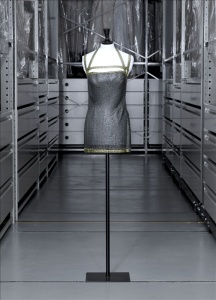
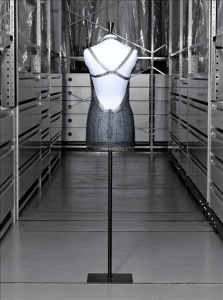
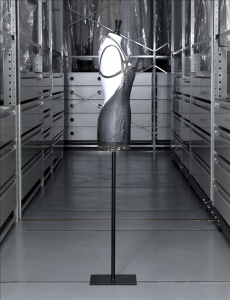
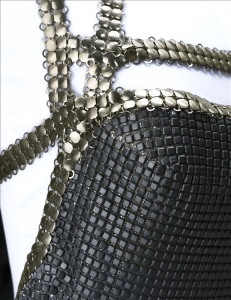
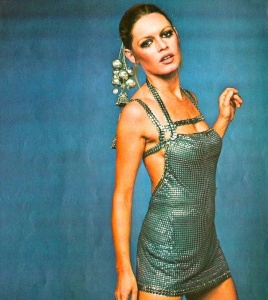
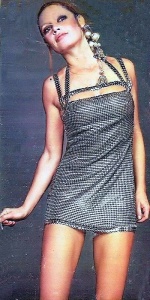
Silver-coloured chain mail.
In the work of Paco Rabanne (b. 1934) the visual arts meet haute couture. Before becoming fashion's 'metalsmith', Francisco Rabaneda Cuervo, born in Spain to a Balenciaga chief seamstress and a Republican general assassinated in 1936, fled to France, where he studied architecture and designed haute couture accessories. In 1966 he showed the manifesto collection Twelve Unwearable Dresses in Contemporary Materials with Pierre Boulez's Le Marteau sans Maître as the backing track. In the venerable setting of the Hôtel Georges V in Paris he broke all the rules of the traditional fashion parade, with Boulez's staccato sounds accompanying the passage of barefoot models. Even more baffling for the audience were the clothes, made out of such incongruous materials as plastic and aluminium. This version of modernity, though, appealed to stars of the time like Brigitte Bardot, Anouk Aimée and Françoise Hardy, and this clinched the label's status. By then an international figure, 'BB' posed in this metal minidress for the weekly Paris-Match of 7 December 1968.
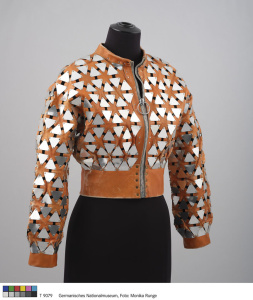
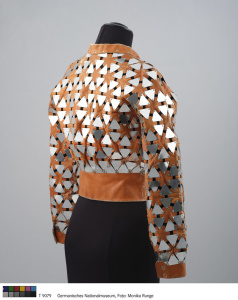
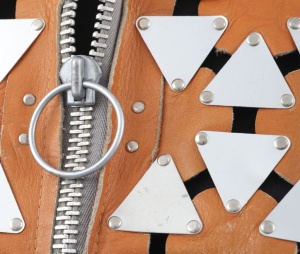
The Germanisches Nationalmuseum in Nuremberg, Germany, recently acquired a rare Paco Rabanne blouson from the Autumn/Winter Collection 1967/68, made of discs of orange calf leather and aluminium triangles. The only seams are to be found on the front, to attach the zip fastener; all other elements have been fixed with the help of rivets. Paco Rabanne constructed the blouson starting from small pieces – just the opposite of normal dressmaking where a big piece of textile is cut into parts to create a pattern.
Both materials – leather and metal – have a long tradition in dress history, and have been mainly used for protection against military attacks and climate inconveniences. When Paco Rabanne decided to go for these hard materials for a woman’s outergarment, he wanted to offer women a protective piece of armour against the challenges of modern everyday life.
The blouson – a jacket which came into life during the 1920ies for American Air Force pilots – developed into a fashionable garment for young rebel teenagers in the 1950ies. To dress women in this type of jacket was still quite provocative in 1967! French magazine “Elle” showed a black and white version worn by super model Twiggy – entitled “Twiggy Miss Motard” (Miss Motor-cycling).
